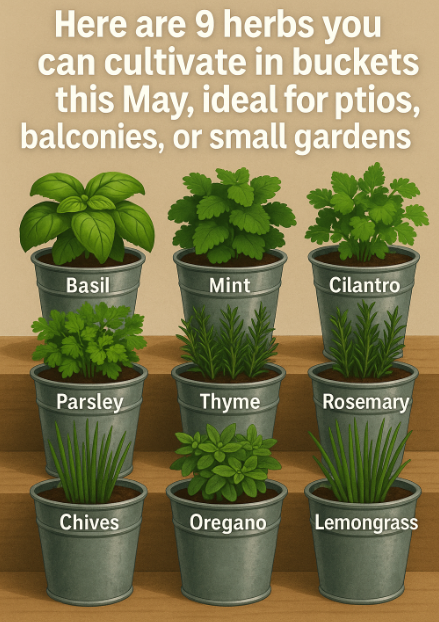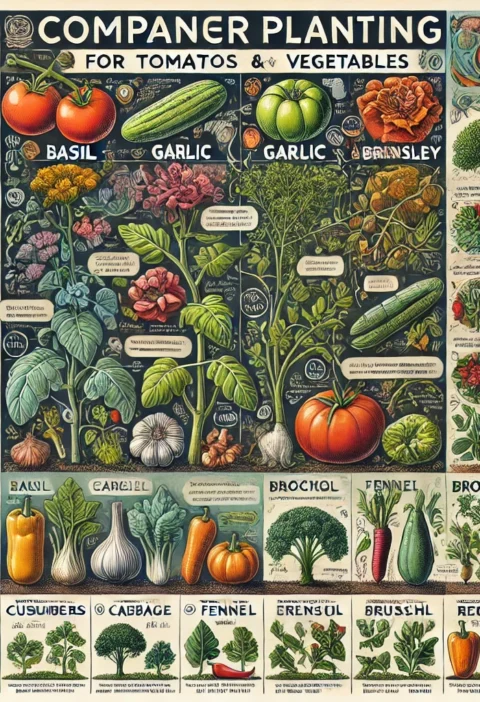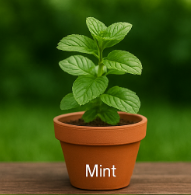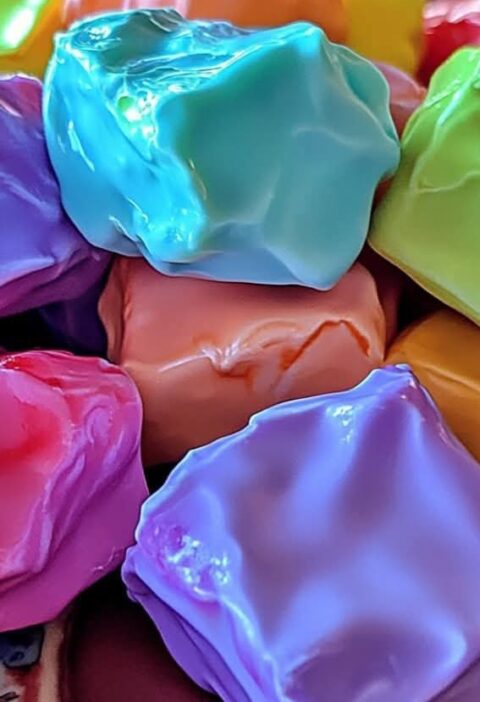19. Bucket Setup Deep Dive
Maximize performance—and style—by elevating your basic bucket into a high-efficiency, decorative container system.
19.1 Advanced Drainage Techniques
- Dual-Layer Drainage: Place 1″ of coarse gravel or LECA clay balls at the bottom, then a layer of landscape fabric before potting mix. This prevents mix from washing into the gravel and ensures free water flow.
- Internal Wick System: Thread a strip of cotton rope through a small hole near the bucket base. The rope draws excess moisture into a lower reservoir (another waterproof bucket), reducing root-rot risk.
- Self-Watering Wick Pots: Insert a 2″ wide felt strip vertically from a lower water reservoir up into the soil. Top off the reservoir every 5–7 days for consistent moisture delivery without daily watering.
19.2 Decorative & Functional Buckets
- Paint & Seal: Use exterior acrylic paint to customize colors; seal edges with clear varnish to protect against UV and moisture.
- Decoupage Panels: Adhere waterproof paper prints or fabric to the outside with outdoor Mod Podge for an artisanal look.
- Handles & Wheels: Screw on D-rings and carabiners to attach rope handles, or bolt on caster wheels for easy mobility.
19.3 DIY Micro-Irrigation Add-Ons
- Drip Tape Integration: Punch small holes in ¼″ poly drip tape and bury it at root depth; connect to a timer-controlled emitter for precise watering.
- Capillary Matting: Line the inside walls with capillary fabric that wicks moisture from a lower reservoir through the bucket walls directly to roots.
- Rainwater Diverter: Attach a small gutter diverter to your downspout and route rain into a bucket reservoir beneath the planting bucket, creating an automated filling system.
20. Herb Profiles: History, Uses & Top Varieties
20.1 Basil (Ocimum basilicum)
History & Origin: Native to India and Southeast Asia, basil has been cultivated for over 5,000 years. Its name derives from the Greek “basilikón” meaning “royal,” reflecting its historical culinary and medicinal prestige.
Culinary Uses:
- Classic Genovese pesto, Caprese salads, and Thai curries.
- Lemon and cinnamon basils lend unique twists to teas and desserts.
Medicinal Properties: Rich in antioxidants (rosmarinic acid), basil supports digestion, reduces inflammation, and may have antimicrobial effects. A cup of fresh leaf infusion can soothe indigestion and stress.
Top Varieties:
- ‘Genovese’ – large leaves, ideal for pesto.
- ‘Thai’ – spicy anise notes, perfect for Southeast Asian dishes.
- ‘Purple Ruffles’ – ornamental with mild clove flavor.
20.2 Mint (Mentha spp.)
History & Origin: Mint’s aromatic qualities were prized in ancient Greece and Rome for both flavor and fragrance. Over 20 species and hundreds of cultivars exist, adapted to climates worldwide.
Culinary Uses:
- Classic mint juleps, tabbouleh, and Moroccan mint tea (fresh leaves).
- Chocolate mint works beautifully in cookies and ice creams.
Medicinal Properties: Menthol in mint soothes indigestion, relieves headaches, and clears respiratory passages. A cup of mint tea after meals aids digestion and reduces bloating.
Top Varieties:
- ‘Spearmint’ – the standard kitchen mint.
- ‘Peppermint’ – higher menthol content, intense cooling.
- ‘Apple Mint’ – fruity fragrance, low bitterness.
20.3 Cilantro (Coriandrum sativum)
History & Origin: Used since 5,000 BC, cilantro was found in ancient Egyptian tombs. Both leaves (cilantro) and seeds (coriander) are culinary staples across Latin American, Indian, and Middle Eastern cuisines.
Culinary Uses:
- Salsa, guacamole, chutneys, curries, and fresh herb salads.
- Seeds (coriander) are toasted and ground for spice blends like garam masala.
Medicinal Properties: Cilantro is a natural chelating agent—research suggests it can help bind and remove heavy metals from the body. It also offers antimicrobial and anti-inflammatory benefits.
Top Varieties:
- ‘Calypso’ – bolt-resistant, late flowering.
- ‘Leisure’ – compact, ideal for containers.
- ‘Santo’ – strong, pungent flavor for robust dishes.
20.4 Parsley (Petroselinum crispum)
History & Origin: Native to the Mediterranean, parsley has been celebrated since ancient Greek and Roman times for its medicinal and culinary virtues. It was used in wreaths and as a breath freshener at banquets.
Culinary Uses:
- Garnish for soups, stews, tabbouleh, chimichurri, and gremolata.
- Flat-leaf variety favored for its stronger flavor; curly for decorative plating.
Medicinal Properties: High in vitamins A, C, and K. Parsley supports bone health, acts as a diuretic, and contains apigenin, a flavonoid with potential anti-cancer properties.
Top Varieties:
- ‘Flat-Leaf (Italian)’ – robust flavor, preferred by chefs.
- ‘Curly’ – classic garnish, slower to bolt.
20.5 Thyme (Thymus vulgaris)
History & Origin: Native to the Mediterranean region, thyme was revered by ancient Egyptians and Greeks for its antiseptic and aromatic qualities. Its name derives from the Greek “thymos,” meaning courage, reflecting its use in bathing rituals for strength.
Culinary Uses:
- Classic seasoning for roasted meats, stews, and soups.
- Essential in bouquet garni and herbes de Provence blends.
- Lemon thyme brightens fish dishes and herb-infused butters.
Medicinal Properties: Rich in thymol and carvacrol, thyme possesses antiseptic, antibacterial, and expectorant properties. Thyme tea can soothe coughs, relieve respiratory congestion, and support immune health.
Top Varieties:
- ‘Common (English)’ – robust flavor, versatile in cooking.
- ‘Lemon’ – citrus aroma, ideal for poultry and seafood.
- ‘Creeping’ – low-growing groundcover, edible and ornamental.
20.6 Rosemary (Salvia rosmarinus)
History & Origin: Indigenous to the Mediterranean coast, rosemary has adorned garlands and wreaths since antiquity. It was a symbol of remembrance in ancient Greece, and medieval European weddings featured rosemary sprigs to signify fidelity.
Culinary Uses:
- Infuses olive oil and marinades for lamb, chicken, and potatoes.
- Use fresh sprigs in bread, focaccia, and savory tarts.
- Dried needles add depth to soups and roasted vegetables.
Medicinal Properties: Rosemary contains rosmarinic acid and carnosic acid, powerful antioxidants that support circulation, memory, and digestion. Inhaling rosemary essential oils can improve mental clarity and reduce stress.
Top Varieties:
- ‘Arp’ – cold-hardy, erect growth habit.
- ‘Spice Island’ – robust flavor, year-round green in mild climates.
- ‘Prostratus’ – trailing form excellent for hanging baskets.
20.7 Chives (Allium schoenoprasum)
History & Origin: A member of the onion family, chives have been used since ancient Roman times both as a culinary herb and for their medicinal benefits. Their cheerful purple blooms were historically believed to ward off evil spirits.
Culinary Uses:
- Finely chopped into omelets, mashed potatoes, and creamy dips.
- Chive blossom vinegar and chive-infused butters add subtle allium notes.
- Use flowers as edible garnishes on salads and canapés.
Medicinal Properties: Chives contain allicin, a compound with antibacterial and cardiovascular benefits. Traditionally, chive tea was consumed to aid digestion and relieve coughs.
Top Varieties:
- ‘Common’ – the standard culinary chive with mild flavor.
- ‘Garlic Chives’ – broader leaves and a mild garlic aroma.
- ‘Siberian’ – cold-hardy and reliable perennial habit.
20.8 Oregano (Origanum vulgare)
History & Origin: Native to the Mediterranean and Western Asia, oregano was prized by ancient Greeks for its sacred and medicinal value. Its name, meaning “joy of the mountain,” reflects its aromatic charm.
Culinary Uses:
- Integral to Italian sauces, pizzas, and Greek salads.
- Dried leaves contribute a warm, slightly bitter note to stews and marinades.
- Fresh sprigs flavor infused oils and vinegars.
Medicinal Properties: Rich in thymol and carvacrol, oregano exhibits strong antimicrobial and anti-inflammatory action. Oregano tea can soothe sore throats and boost immune response.
Top Varieties:
- ‘Greek’ – compact, intense flavor ideal for culinary use.
- ‘Italian’ – milder, suitable for herb blends.
- ‘Golden’ – variegated foliage, ornamental and edible.
20.9 Lemongrass (Cymbopogon citratus)
History & Origin: Indigenous to Southeast Asia, lemongrass has been used in Ayurveda and traditional Chinese medicine for centuries. Its citral-rich stalks are a staple in Thai, Vietnamese, and Caribbean cuisines.
Culinary Uses:
- Flavoring for soups, curries, and marinades.
- Steeped in teas and infusions for its refreshing, lemony taste.
- Crushed stalks can be used to scent rice and stews.
Medicinal Properties: Lemongrass contains antioxidants and essential oils with antimicrobial and anti-inflammatory properties. Lemongrass tea aids digestion, reduces anxiety, and may lower cholesterol.
Top Varieties:
- ‘East Indian’ – robust stalks with pronounced citrus flavor.
- ‘West Indian’ – hardier in subtropical climates.






